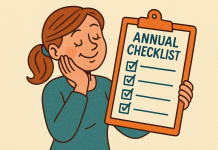You probably heard that Mattel came out with three new body types for Barbie in addition to the “Original.” These new types are supposed to better reflect the unique differences among women. Do they? Maybe.
Whatever the dolls look like, it is pretty great that a big company like Mattel is feeling pressured about showcasing diversity.
However, playing with dolls that have a cartoonish shape featuring a tiny waist and legs for days (or, err, inches) didn’t teach me about how women’s bodies should look. They didn’t teach me poor self-esteem or negative body image.
Playing with Barbie didn’t make me want white-blonde hair down to my bum, tan skin or to wear a neon-colored skimpy bikini.
…Yes, I’m describing my absolute favorite Barbie from growing up. It was something like “Fun in the Sun Barbie.” I would change her outfit 15 times in a row and brush her hair until it was perfectly smooth. Side note: I can’t say I ever treated my own hair like that.
As a kid, playing with Barbie and other toys were a way for my imagination to run wild. I would collaborate with my friends on magical, sometimes ridiculous, sometimes hilariously mundane worlds and situations. Seriously, anyone else love acting out “going to the grocery store” or “packing for a trip” or was it just me?
And sure, maybe they did connect to reality in some way. We could act out our fears and fantasies … or we could just be silly.
I’m not sure I can pinpoint the exact moment, but at some point in elementary school I heard the word “diet” for the first time. I heard moms, older girls I knew, babysitters, family and friends ruthlessly pick apart their appearance and wish for a different this-or-that. I didn’t learn from Barbie that women need to lose weight (or get a tan, or buy a special dress) to be happy. I learned it from women in my life. And maybe teen magazines.
Barbie has boobs (shocking!) and sometimes wears a tight dress (scandal!) Will that teach my daughter that she has to look that way? I don’t think so.
I also learned self-love and acceptance from women in my life. Women with long hair, women with short hair. Women who loved wearing makeup and women who swiped on lip balm (if that) before heading out for the day. Women of different colors, sizes and lifestyles could be happy just as they were. I learned that confidant women liked themselves and had nice things to say about other people, too.
When my daughter sees her mom (who, also, shockingly, has boobs) put on a tight dress, I will try my hardest to not to pick apart my appearance in the mirror. I will try my best to say something nice, or say nothing at all. …or, you know, talk about something other than what I look like.
Because the glass mirror in front of me won’t be the only one. My daughter may not mirror everything I do, but I know she will hear how I speak to and about myself, and possibly use that narrative to build her own sense of self. I hope to set an example that not every woman hates her appearance. That not every woman constantly recites a laundry list of things she wants to change about her appearance or herself. I hope to teach her that it’s great to have goals, to want to improve yourself or your life but that there are better, happier, healthier ways to live than constantly pointing out our flaws (or the flaws of others.)
p.s. You may have missed it during the announcement because so much attention was paid to the new body types, but Barbie also recently expanded the skin tones of their dolls.
To me this is a more important move by the company.
It’s necessary for girls of all colors to find themselves represented in pop culture, books, movies and yes, on the shelf at the toy store. I don’t expect Mattel to tackle race relations in America but creating mass-marketed toys that better represent our population is a good step. I grew up with dolls of all skin tones thanks to my uber-PC parents. Thanks, guys! I noticed my dolls’ different skin colors – yeah, I wasn’t “color blind” and neither are most kids – but I didn’t play less or more of any of my dolls because of it. I loved them all. Barbie didn’t teach me about race and racism in the same way she didn’t teach me about body image, but maybe she played a (small) part in my understanding that all people deserve equal, kind treatment regardless of our differences.
Okay, so things don’t always have to be serious when it comes to toys, but it’s important to remember that what adults say and do during playtime – and in life – may have a greater impact on our kids than the way a skinny doll with a fake tan and skimpy bikini looks.










I completely agree. I loved my barbie too plus we had mostly fake or cheaper barbie dolls so when I got to play with original barbie – exciting!! I never looked at the body type – ever. I was born in 1969. I think you interviewed girls from that generation they’d say the same thing. Barbie dolls were for fun fantasy games , I loved dressing them up and playing house, going on dates or the beach. We learn about body image from school – peers, our Nans and Auntys etc. and NOT from with the dolls I played with, you can’t blame the barbie doll for society’s shortcomings, it reflected the time. We’ve moved on thank heavens yes – but you can’t change the past- we need to stop trying to erase everything from our past or replace it- like books etc. Accept and acknowledge it happened , it was a reflection of the time and learn from it and move forward.